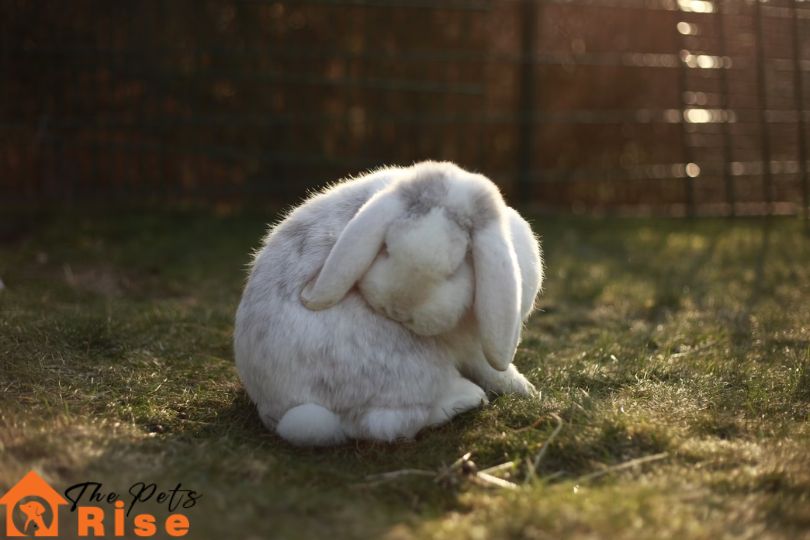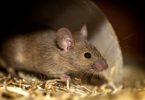Common diseases in rabbits can be too problematic not only for the rabbits but for the pet rabbit owners as well. Not only that will cause discomfort to their pets but they will also make the pet owners anxious. As a pet owner, you will want to keep your beloved rabbits happy and healthy. As rabbit owners themselves, are well aware of the various rabbit diseases that can affect these adorable furry creatures.
In this comprehensive guide, we will provide you with valuable information about common rabbit diseases or common rabbit illness including their prevention, symptoms, and treatment. Our aim is to equip you with the knowledge needed to ensure the well-being of your fluffy companions.
Why You Should Learn About Common Diseases In Rabbits?
Learning about common diseases in rabbits is important for several reasons:
-
Early detection:
By understanding the common diseases in rabbits, you can recognize the signs and symptoms at an early stage. This allows you to seek veterinary care promptly, increasing the chances of successful treatment and recovery.
-
Preventive care:
Knowledge of common rabbit diseases helps you take preventive measures to keep your rabbit healthy. You can implement appropriate vaccinations, parasite control, and hygiene practices to reduce the risk of disease transmission.
-
Health maintenance:
Rabbits are prone to certain health conditions, such as dental problems, gastrointestinal stasis, and respiratory issues. Learning about rabbit sickness and diseases enables you to provide proper nutrition, dental care, and environmental conditions to support your rabbit’s overall health.
-
Treatment understanding:
Understanding common rabbit diseases helps you comprehend the treatment options available for certain rabbit infections as well. It allows you to make informed decisions in consultation with your veterinarian, ensuring the most effective treatment plan is implemented for your rabbit’s specific condition.
-
Emergency preparedness:
In case of a health emergency, having knowledge about diseases in rabbits can help you provide immediate care while waiting for veterinary assistance. This can be crucial in critical situations where time is of the essence.
-
Quality of life:
By being familiar with common rabbit diseases, you can actively contribute to improving your rabbit’s quality of life. You can create a safe and healthy environment, provide appropriate nutrition, and be attentive to any changes in behavior or health, leading to a happier and longer life for your furry companion.
Remember, while it is valuable to educate yourself about common diseases in rabbits, always consult a qualified veterinarian for an accurate diagnosis and proper treatment for common diseases in rabbits.
Common Diseases In Rabbits
The following are the most common diseases in rabbits that you should know about.
-
Dental Problems in Rabbits
Overview:
Maintaining good dental health is crucial for rabbits, as their teeth continually grow throughout their lives. One of the most common diseases in rabbits is related to dental health which is prevalent among rabbits. They can lead to serious health issues if not addressed promptly. From overgrown teeth in rabbits to certain infections take a look at the following.
Common Dental Diseases
-
Malocclusion
A common rabbit illness related to their teeth is Malocclusion, or “overgrown teeth”. It occurs when a rabbit’s teeth do not align properly, leading to uneven wear. This condition can result in sharp points or elongated teeth, causing pain and difficulty in eating.
-
Tooth Abscess
Another common rabbit disease related to its teeth is tooth abscess. Those are pus-filled pockets that form around infected teeth. They can be caused by tooth root elongation, dental trauma, or bacterial infection. If left untreated, abscesses can spread and cause severe complications.
Prevention and Treatment
Those common diseases in rabbits may seem a big deal but regular veterinary check-ups are essential to monitor your rabbit’s dental health. However, to prevent dental problems:
- Provide a balanced diet with plenty of roughage, such as hay, which promotes the natural wear of the teeth.
- Offer chew toys and safe, untreated wooden blocks to encourage chewing and prevent teeth overgrowth.
- Avoid feeding your rabbit a high-starch or sugary diet, as it can contribute to dental issues.
If rabbit infections in the mouth occur, your veterinarian may recommend treatments such as teeth filling, tooth extraction, or antibiotic therapy for abscesses.
-
Gastrointestinal Stasis (GI Stasis)
Overview
One of the most dangerous rabbit diseases is Gastrointestinal stasis. It is commonly referred to as GI stasis or “the silent killer,” is a potentially life-threatening condition that affects a rabbit’s digestive system. It occurs when the normal movement of food through the digestive tract slows down or stops completely.
Symptoms
- Recognizing the early signs of GI stasis is crucial for prompt intervention. Watch out for the following symptoms:
- Decreased appetite or complete loss of appetite
- Reduced or no fecal output
- Lethargy and hunched posture
- Abdominal discomfort or bloating
- Signs of pain, such as teeth grinding or excessive salivation
Causes and Prevention
GI stasis can be triggered by various factors, including inadequate diet, lack of exercise, stress, pain, or underlying health issues. To prevent GI stasis:
- Feed your rabbit a balanced diet rich in high-quality hay, fresh vegetables, and a limited amount of pellets.
- Provide regular exercise opportunities to stimulate gut motility.
- Ensure a stress-free environment and minimize sudden changes in routine or surroundings.
- Maintain proper hydration by offering fresh water at all times.
Treatment
This is one of those diseases in rabbits that can easily be treated at earlier stages. If you suspect GI stasis, seek immediate veterinary assistance. Treatment may involve pain management, fluid therapy, syringe feeding, motility-enhancing medications, and supportive care.
-
Myxomatosis
Overview
Myxomatosis is a viral and one of those common diseases in rabbits that affect rabbits and is primarily transmitted by biting insects, such as fleas, mosquitoes, and mites. It can cause severe illness and often proves fatal.
Symptoms
The symptoms of myxomatosis vary depending on the stage of the disease. They may include:
- Swelling and discharge around the eyes, nose, and genitals
- Skin lesions, lumps, or nodules
- Respiratory distress
- Loss of appetite and weight loss
- Boredom and depression
Prevention
- Preventing myxomatosis involves minimizing exposure to insects that transmit the virus. Here are some preventive measures:
- Use insect repellents specifically designed for rabbits.
- Keep your rabbit indoors or in a well-screened area during peak insect activity.
- Regularly check and treat your rabbit for fleas and other parasites.
- Consult your veterinarian about available myxomatosis vaccinations in your area.
Treatment
There is no specific cure for myxomatosis for such rabbit diseases right now. Supportive care, including wound management, pain relief, and nutritional support, can help alleviate symptoms and improve the rabbit’s comfort. However, the prognosis for rabbits with myxomatosis is often poor.
-
Pasteurellosis
Overview
Pasteurellosis is á bacterial rabbit infection caused by the bacterium Pasteurella multocida. It can affect various body systems, leading to respiratory, ocular, or systemic issues.
Symptoms of pasteurellosis can vary depending on the affected areas, but common signs include:
- Sneezing, nasal discharge, and difficulty breathing
- Eye infections, such as conjunctivitis or discharge
- Abscesses, especially around the head or neck
- Anorexia and weight loss
- Lethargy and decreased activity
- Prevention and Treatment
Preventing pasteurellosis involves maintaining good hygiene, minimizing stress, and promptly addressing any signs of illness. To prevent transmission:
- Keep your rabbit’s living area clean and provide good ventilation.
- Avoid overcrowding and provide ample space for each rabbit.
- Quarantine new rabbits and conduct health checks before introducing them to an existing group.
- Treatment may involve antibiotics, supportive care, and addressing any underlying conditions or complications.
Conclusion
As responsible rabbit owners, it’s crucial to be well-informed about common diseases in rabbits that can affect these delightful pets. By understanding the prevention, symptoms, and treatment options for dental problems, gastrointestinal stasis, myxomatosis, and pasteurellosis, you can ensure the well-being and longevity of your furry friends. Understand rabbit behavior so you know if anything is wrong with them. Remember, regular veterinary check-ups, a balanced diet, proper hygiene, and a stress-free environment are key to keeping your rabbits healthy and happy. Check out our pet care articles and guides for better ideas to take care of your small pets.







